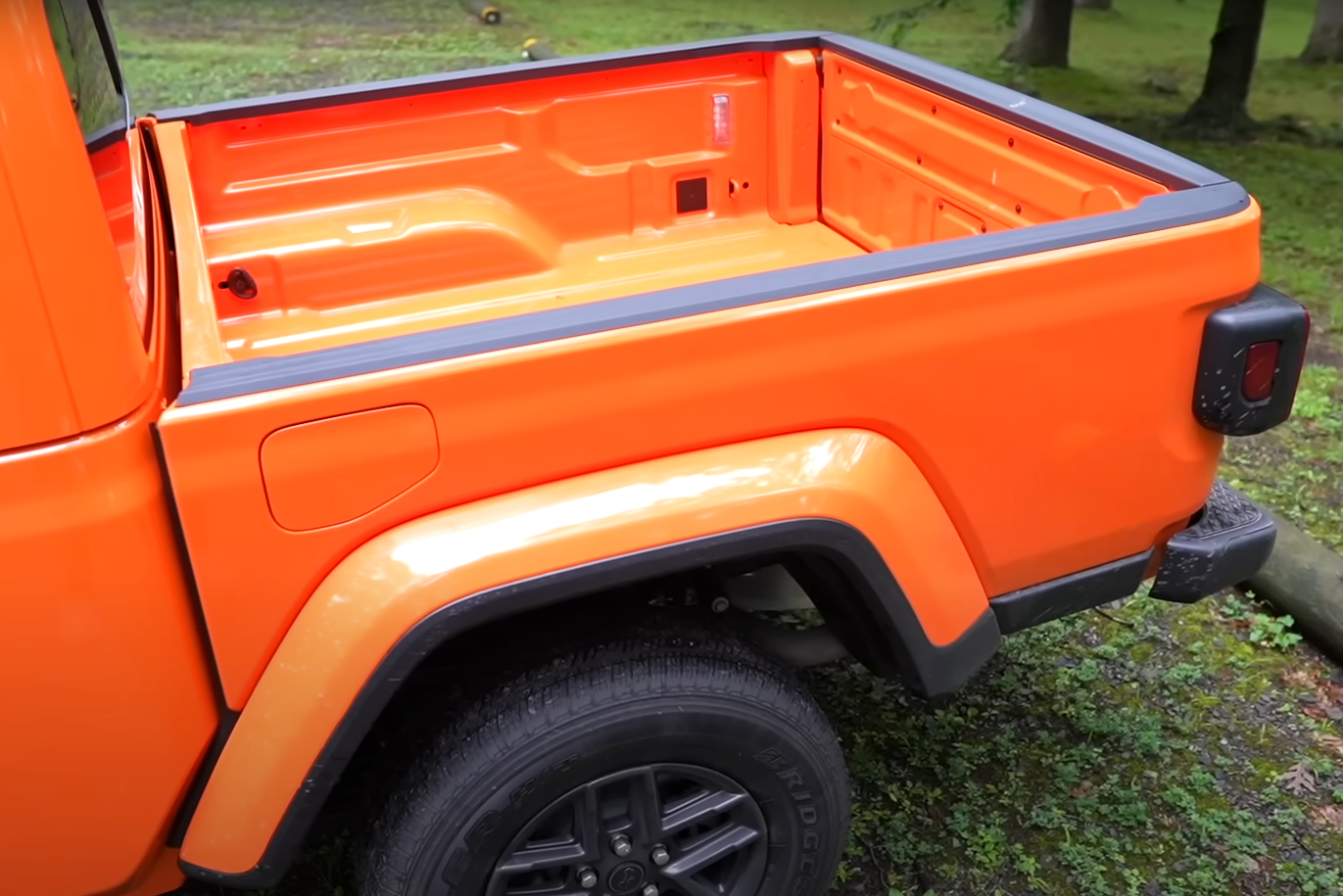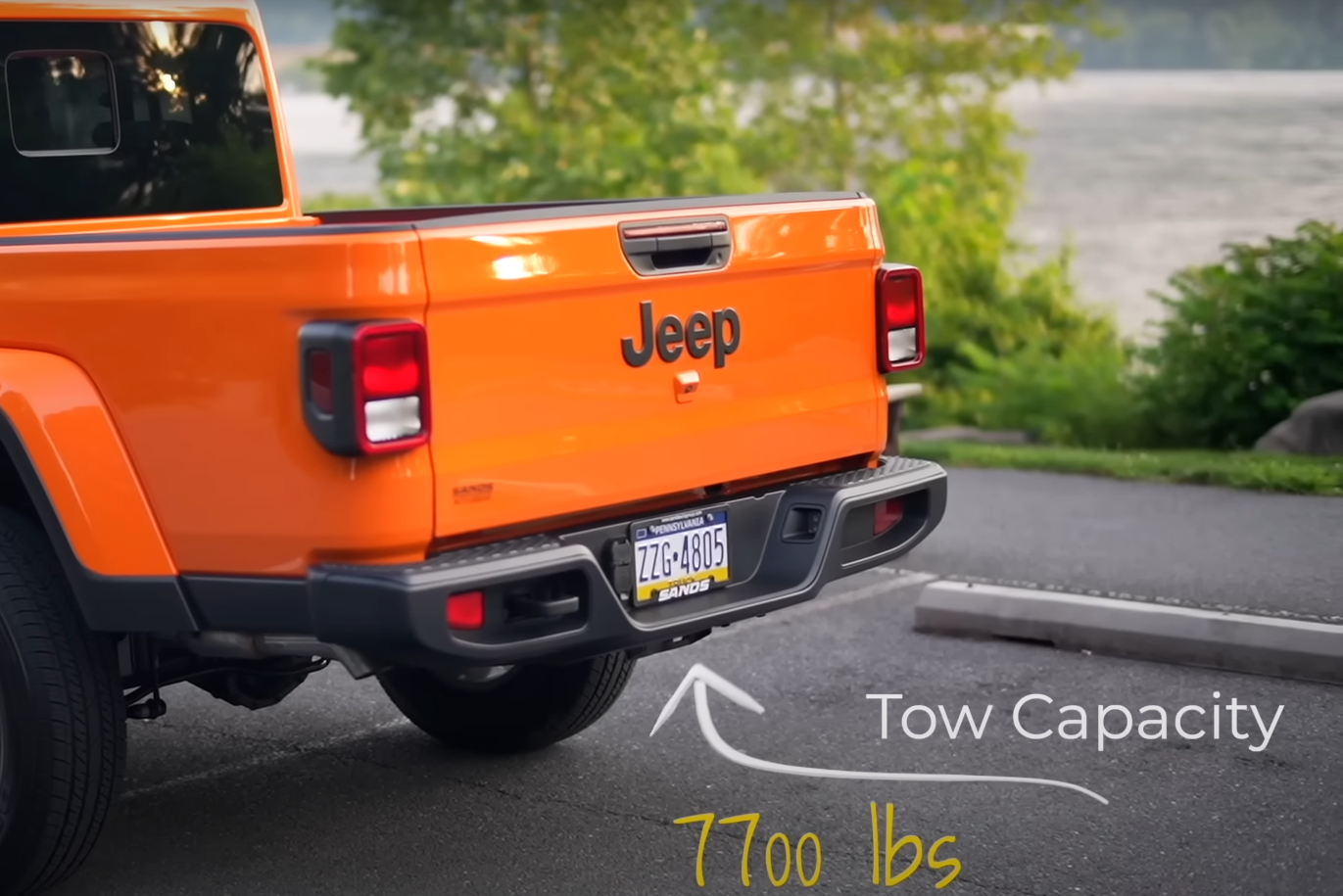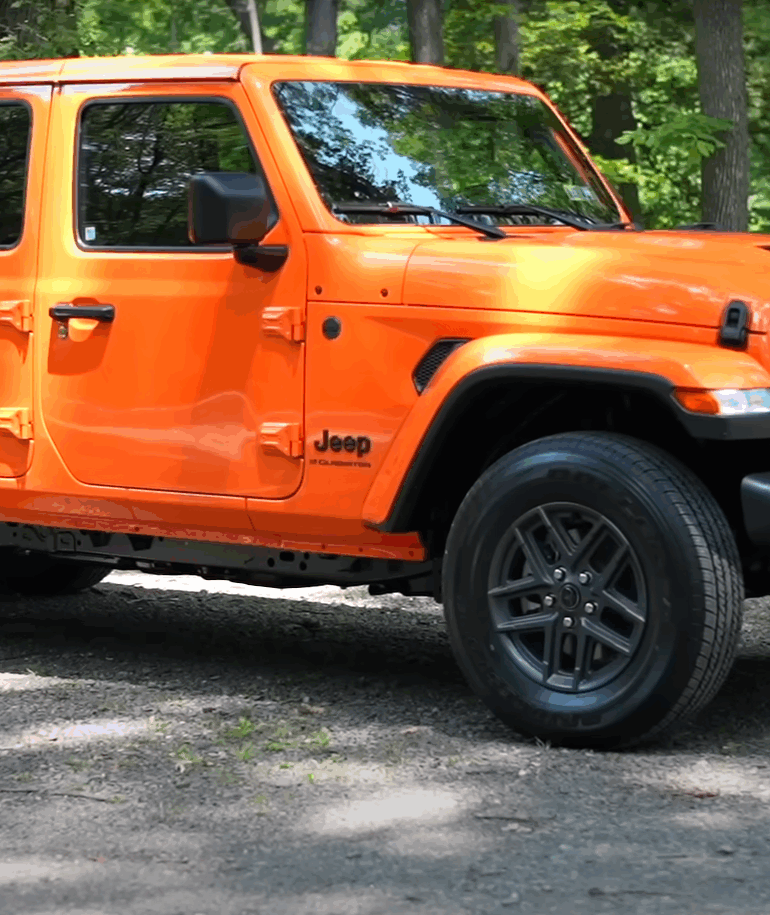The Jeep Gladiator stands out as a unique option for those interested in a mix of off-road ability and the practicality of a pickup truck. While it shares many traits with the Jeep Wrangler, the Gladiator adds a bed for extra storage, making it a versatile choice for daily driving, weekend camping, or hauling gear for outdoor adventures. Though it’s not meant for heavy-duty tasks like a full-size truck, its open-air design, removable doors, and roof set it apart from most other vehicles on the market.
New owners often join a welcoming community with traditions like the Jeep wave, which highlights the sense of camaraderie among fellow drivers. The Gladiator is also well-known for the many ways it can be customized. Learning about its features, getting familiar with the vehicle, and planning modifications carefully are key steps for getting the most enjoyment out of this unique Jeep.
Key Takeaways
- The Jeep Gladiator offers both off-road abilities and practical storage.
- Owners can join a strong community and personalize their vehicles.
- Learning the basics and planning upgrades helps maximize the Gladiator experience.
Main Jeep Gladiator Highlights
Medium-Size Build and Pickup Utility
The Jeep Gladiator sits in the midsize category, giving it a slimmer body and greater mobility than full-size trucks. Its wheelbase is longer than the Wrangler, and it includes a bed for extra storage. Most of its frame and features from the back doors forward match the Wrangler, but the bed allows owners to haul larger gear and take on more jobs.
Gladiator drivers get a balance between practical everyday driving and the ability to haul outdoor equipment, camping supplies, or sports gear. It’s important to remember: this is not a full-size work truck, but it provides solid utility for its size class.
Hauling and Carrying Details
When set up with the right options, the Gladiator can tow up to 7,700 lbs. It also offers a maximum payload of 1,725 lbs for carrying cargo in its bed. The bed itself is about 60 inches long and around 48-50 inches wide. While many sources list the bed depth as 33 inches, it’s closer to 20 inches deep.
| Feature | Specification |
|---|---|
| Max Towing | 7,700 lbs |
| Max Payload | 1,725 lbs |
| Bed Length | 60 inches |
| Bed Width | 48-50 inches |
| Bed Depth | Approx. 20 inches |
This truck can handle trailers, kayaks, camping gear, or motorcycles with ease. It is not meant for the heaviest towing jobs, like pulling large fifth-wheel trailers or big construction equipment, but does more than a standard SUV.
Fully Detachable Roof and Doors
One standout feature of the Gladiator is its removable top and doors. No other midsize pickup currently has the ability to go fully open-air like this. Owners can take off the roof and doors for a true outdoor driving experience, then put them back on for daily commuting or tough weather.
This open-air feature is popular with fans of outdoor sports and camping. It also sets the Gladiator apart for weekends or vacations, letting drivers and passengers enjoy fresh air and views while on the road or trail.
How to Use Your Jeep Gladiator

Everyday Travel and Getting Around
The Jeep Gladiator is well-suited for daily use, whether that means commuting to work, running errands, or taking the kids out. Even though it is not a full-size truck, it is easy to drive and fits in regular parking spaces. The vehicle is narrow and nimble, making it simpler to handle compared to larger pickups.
Jeep Gladiator owners often get greeted by other Jeep drivers. This wave is a common Jeep tradition and builds community among owners. Expect it when driving around town.
Hauling, Bed Features, and Carrying Stuff
The Gladiator has a bed that measures about 60 inches long and about 48 to 50 inches wide. While it does not match a full-size pickup’s space, it still gives plenty of room for gear, smaller furniture, or home improvement items. The depth is about 20 inches, which allows for stacking things without much trouble.
Owners should know the Gladiator’s limits. The highest towing capacity is 7,700 pounds when equipped correctly, and it can carry a maximum payload of 1,725 pounds in the bed. It does not handle extra-large jobs like heavy construction, but it does offer many ways to arrange the cargo. People can add bed racks, covers, or campers to increase what they can carry.
| Bed Length | Bed Width | Max Towing | Max Payload |
|---|---|---|---|
| 60 inches | 48-50 inches | 7,700 lbs | 1,725 lbs |
Exploring, Camping, and Outdoor Fun
The Gladiator stands out for those who like adventure. It is especially useful for camping, long trips off the grid, or action sports like snowboarding, skiing, and kayaking. The truck bed and rooftop can hold equipment, and the open-air design lets owners remove the top and doors for a unique experience.
For off-roading, the Gladiator has solid axles and is built for tough trails, though it may need some changes—like lifts or better tires—for serious rock crawling. Its longer wheelbase means that drivers should be careful on sharper obstacles, but the large number of available upgrades makes it easy to build for different adventures.
Gladiator owners often take time to learn about their trucks before adding upgrades. It can help to use the Gladiator for a few trips first to figure out what gear or changes are actually needed. This makes camping, exploring, or overlanding both easier and more comfortable.
Off-Road Capabilities

Axles and Suspension Setup
The Jeep Gladiator uses solid axles in both the front and back. This type of setup is well-known for durability and is trusted by off-road fans. Solid axles help keep all wheels in contact with the ground, even on bumpy or uneven trails.
Suspension Features:
- Strong enough for challenging paths
- Designed to handle rough terrain
- Shares many parts with the Jeep Wrangler, so upgrades are easy to find
Maneuvering Over Rocks
The Gladiator has a longer wheelbase compared to some other off-road vehicles. This means the back wheels sit further from the front wheels, and the truck bed sticks out behind the rear axle. These features can make tight rock crawling trickier.
Points to consider:
- The long wheelbase can cause the bottom to scrape on high points
- The bed overhang may get caught or bump into rocks
- Adding lift kits and special parts can help improve performance on rocky trails
Modifying for the Trails
There is a wide range of parts to customize the Jeep Gladiator for off-road use. New owners can pick from many upgrades for better ground clearance, stronger suspension, or extra storage in the bed.
| Custom Option | Usefulness | Notes |
|---|---|---|
| Lift Kits | Provides more space under the vehicle | Good for rocks and rough trails |
| Bed Racks | Holds extra gear outside | Useful for camping and sports |
| Custom Bumpers | Offers better protection | Helps with both safety and looks |
It is easy to get tempted by all the choices, but it helps to plan out what upgrades are needed first. This way, owners can match parts to how they will use their Gladiator, whether for camping, sports, or rocky trails.
Jeep Community and Way of Life
The Friendly Jeep Greeting
Drivers in the Jeep world often share a special acknowledgment called the Jeep wave. When someone passes another Jeep, it’s common to see a friendly hand raised as a sign of respect. This tradition dates back to soldiers returning home after World War II, who waved to each other in a V shape for “victory.”
Today, this simple exchange continues. No matter what Jeep model someone drives—Wrangler or Gladiator—they’re likely to be waved at. Most owners quickly learn to return the gesture. The wave is a sign of connection and belonging, not a requirement for friendship.
Quick Facts:
| Jeep Wave Facts | Details |
|---|---|
| Started after World War II | V-shaped “victory” wave |
| Common among Jeep models | Wrangler, Gladiator |
| Purpose | Show respect, connect |
Making New Friends Through Jeeps
Owning a Jeep brings people together. Drivers find themselves part of a larger group that loves exploring, camping, and tackling tough roads. The Jeep lifestyle often leads to meeting others at events, trails, or even parking lots.
Many owners share advice and ideas about upgrades or basic care for their vehicles. Group trips, online forums, and local clubs help build lasting friendships and make it easier for newcomers to fit in.
Ways Jeep Owners Connect:
- Waving at each other on the road
- Gathering for off-road adventures
- Chatting at Jeep meetups or online groups
- Sharing DIY modification tips
Being in the Jeep group is more than just owning a vehicle—it’s about joining a supportive network that enjoys similar interests and looks out for fellow drivers.
Making Changes and Adding Upgrades
Creating a Plan for Your Upgrades
Before adding new parts, owners should decide what they want from their Jeep Gladiator. Some people want to go camping, drive off-road, or just use it for daily driving. It helps to test the Jeep in different ways first. Taking time to plan avoids spending money on parts that may not fit your needs.
- List the main ways you will use your Jeep
- Try out your Jeep before buying upgrades
- Make small upgrades at first to see what works
Picking Add-Ons and Upgrades
There are many parts made for the Jeep Gladiator. It uses many of the same parts as the Jeep Wrangler in the front. Owners can find wheels, tires, extra lights, lift kits, and more. The bed allows for even more options.
Common Upgrades:
| Area | Examples |
|---|---|
| Front End | Bumpers, fenders, lights |
| Suspension | Lift kits, shocks |
| Bed | Racks, campers, covers |
| Wheels & Tires | All-terrain or mud tires |
Changing the Bed Area
The Gladiator has a bed that can hold racks, covers, campers, or other storage. Though the bed is not as large as full-size trucks, it still offers many ways to carry gear for trips or sports. There are also full bed swaps and other accessories made just for the Gladiator.
Popular Bed Upgrades:
- Bed racks for extra storage
- Camper shells for camping trips
- Tonneau covers to keep items dry
- Full bed replacements for special needs
Setting a Budget and Avoiding Problems
Many owners spend too much on the wrong parts at first. It is helpful to check reviews, talk to local shops, and learn from others’ experiences. Buying smart saves money and prevents having to replace parts later.
Tips to Stay on Budget:
- Start with small and affordable mods
- Do research before buying big items
- Ask questions at shops or online
- Make sure every upgrade fits your plan
By going step by step and making a plan, it is easier to make your Jeep fit how you want to use it.
Learning the Basics About Your Jeep Gladiator

Getting Comfortable With the Inside and Outside
Take time to walk around the Jeep Gladiator, both inside and out. Notice the shape and size of the truck. The Gladiator is a mid-size vehicle with a narrow build and an open bed at the back. Doors and the roof can be removed, making it different from most other trucks.
Drivers should sit in all the seats and check how much leg room there is in the front and back. Open the bed and check the size—about 60 inches long and between 48 to 50 inches wide. It’s easy to reach into the bed. The inside shares many features with the Jeep Wrangler, so many controls and layouts are similar.
Key Points:
- Removable doors and top for an open-air experience.
- Back seat and bed designed for cargo and outdoor gear.
- Common features with the Jeep Wrangler, especially from the front doors forward.
Key Parts Under the Hood
Spend a few minutes looking inside the engine compartment. Notice where important parts like the air filter, battery, and fuse box are located. Look for where all the fluids such as oil, coolant, and brake fluid go. This helps owners spot if there is ever a leak or any part out of place.
If you know how the engine bay is supposed to look, it’s easier to catch problems early. It’s helpful to look underneath the Jeep to see the axles and other key parts, especially for those who plan to go off-road.
Important Areas To Find:
- Air filter
- Battery
- Fuse panel
- Fluid fill locations (oil, coolant, brake fluid)
Regular Inspections and Care
Owners are encouraged to set aside time to inspect their Gladiator often. Walking around the vehicle helps spot new dents, tire issues, or other changes. Regularly opening the hood and looking at fluid levels and part placement can prevent bigger problems.
Routine Checklist:
| Task | How Often |
|---|---|
| Check fluid levels | Every 2 weeks |
| Look for leaks | Monthly |
| Inspect tires | Before trips |
| Examine engine bay | Monthly |
Spending an hour or two at first getting familiar with the Gladiator helps owners feel more confident behind the wheel and better prepared for maintenance. This habit also keeps the Jeep running smoothly and safely, whether driving in town or out on the trail.

